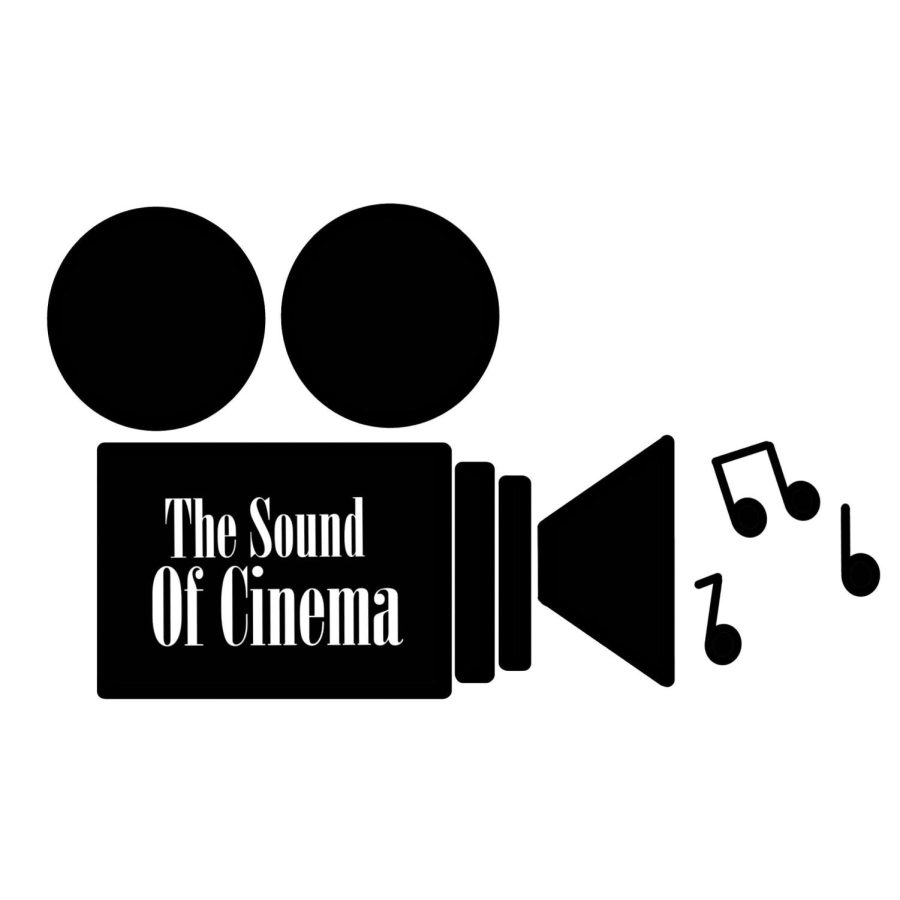The Sound of the Cinema | Shifting away from orchestral film music
The Sound of the Cinema is a biweekly blog about music and sound design in films.
October 9, 2022
When you think of what a film or television score sounds like, what comes to mind? Probably an orchestra, right? The orchestra is, after all, the standard form of film scores. However, film music is unique because film composers can use any sounds they choose. At the end of the day, the score’s job is to create the auditory environment the film needs, and this may require composers to think outside of the box and be creative with their musical sound.
An increasingly common form of film composing is using a hybrid orchestra. A hybrid orchestra consists of the standard orchestral instruments of strings, woodwinds, brass and percussion along with electronic instruments. These instruments can be anything, including synthesizers, electric guitar, and — in the case of Nicholas Britell’s score for HBO’s television show “Succession”— an 808 and a hip-hop beat.
The 13-time Emmy award-winning drama follows the Roys, an extremely wealthy family that owns the media company Waystar Royco. Britell’s score for the show is a blend between orchestra and hip-hop, an unusual combination that accompanies the show well. This combination of styles is apparent from the get go with “Succession (Main Title Theme).” The opening credits introduce us to the mix of genres with a catchy piano line, an 808 and a beat. Strings then take over the cue and it suddenly becomes a dramatic orchestral piece. The beat and piano then return to close out the cue. Britell’s main theme brings out the contemporary classiness the show inspires.
Jóhann Jóhannsson’s score for “Arrival” is another example of a hybrid orchestra creating the right sound for its film. “Arrival” follows professional linguist Louise Banks (Amy Adams) as she tries to uncover the language of unknown aliens, known as heptapods, that have landed on Earth. Jóhannsson utilizes strings and horns in his score but also includes strange organic sounds to mimic the non Earth-like nature of the aliens.
Jóhannsson’s collection of these organic sampled recordings shines brilliantly in his cue “Heptapod B.” A woman singing is at the forefront of the cue and behind her are waves of synthesizers and percussive hits maintaining the cue’s rhythm. Jóhannsson’s score introduces an atmosphere that elevates the slightly frightening but intriguing prospect that the aliens have brought with them to Earth. Jóhannsson’s cue “First Encounter” does a great job emphasizing this fright and intrigue in particular.
Some film scores move away entirely from using the orchestra and utilize sound recordings to create instruments in what is known as “sampling.” A notable example of this is the music for the “Blade Runner” films. Vangelis’s score for the original “Blade Runner” film is composed entirely of synthesizers, and Hans Zimmer and Benjamin Wallfisch’s score for “Blade Runner 2049” works off of this original sound. However, the score for “Blade Runner 2049” also blends recorded sounds into some of the cues.
Zimmer and Wallfisch’s cue “Flight to LAPD” begins with the classic synthesizer sound associated with the dystopian Earth that “Blade Runner” is set in. The cue follows Officer K (Ryan Gosling) as he travels through the city of Los Angeles toward the LAPD building. The cue brings in an abnormal sound about halfway through. Zimmer and Wallfisch blend the sound of a revving vehicle into the mix. It’s an unorthodox choice that allows the cue to build as K approaches the building. In the world of film scores, it’s not often you hear the sound of a revving engine.
Vehicle sounds are definitely unusual, but how about some monkey sounds? HBO’s Emmy award-winning show “White Lotus” uses them. The peculiar show is about the Hawaiian resort White Lotus and a variety of rich people that come to stay. Cristobal Tapia De Veer’s music for the show uses a variety of recording singing and yes, monkey sounds, to create a score like no other. The show’s opening credits cue “Aloha! – Main Title Theme” is strange to listen to at first, but it’s extremely catchy. De Veer’s music, like the music for “Blade Runner 2049,” shifts away from the typical orchestral instruments and uses Hawaiian instruments and sounds to its advantage. The result is a score that mimics the show’s location and strangeness perfectly. It may seem odd to use monkeys in an HBO show’s score, but it definitely works.
With the recording and editing capabilities composers have with audio software today any sound can be used to create a score. The importance of a film’s score is to capture the essence of the film, and if recordings of vehicle engines or monkey sounds (or even mouse clicks) achieve that then the score has done its job. Composers are shifting away from the typical orchestral sound film scores have had since their inception and are experimenting with mixing in whatever sounds they can get their hands on.
Alec Cassidy is a film production and music composition double major who writes about film scores. You can reach them at [email protected].



